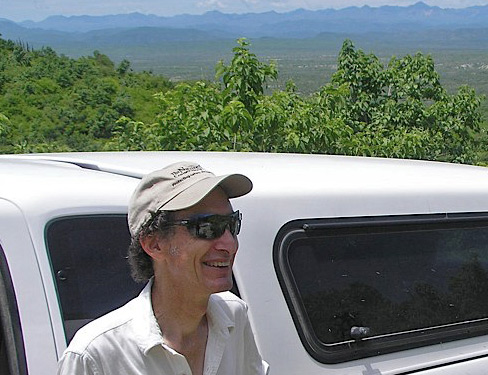The Whetstone Mountains – A Wilderness Overlooked
How do you gauge wilderness qualities? Consider this: deep in the Whetstone Mountains sits a wooden corral with a small metal line shack, remnants of an early cattle ranching operation. Far from any road, its floor has newspapers from 1939 resting where they were dropped when the news was fresh.
The steep, rugged, brush-covered terrain of the Whetstones provide a daunting challenge to all but the hardiest hikers. Only a few old pack trails cross its ridges, additional relics of ranching efforts many decades ago. There are not even foot trails to the highest peaks, providing evidence of the limited visitation this range has received.
The Whetstones were not protected as Wilderness in the 1984 act that designated many other deserving National Forest lands in Arizona, but they clearly deserve and need that status.
Another Sky Island
The Whetstone Mountains reach their high point of 7,711 ft on Apache Peak, rising from approximately 4,800 ft at their edges. Watersheds on the eastern side drain into the San Pedro River, while those on the western side feed Cienega Creek and thus flow into the Tucson basin.
Botanically, the Whetstone Mountains include and are surrounded by Plains Grassland and Semidesert Grassland. Above the grasslands, Madrean Evergreen Woodland covers most of the mountain range, with the highest elevations supporting small stands of ponderosa pine. Several major canyons contain stretches of deciduous riparian forest, with galleries of sycamore and oak.
The spring-fed perennial streams in Wakefield and French Joe Canyons, among others, support rich riparian communities with frogs, turtles, cottonwood and willow trees, along with a great diversity of birds. Black bear and mountain lions come down to drink, along with the dense population of whitetail deer which attracts hunters, both human and feline.
The U.S. Forest Service manages most of the Whetstone Mountains as a 70.5-mi2 block of land within their Sierra Vista Ranger District. It serves as an eastern boundary for the Sonoita Plains and Las Cienegas National Conservation Area.
Ecological Values
The Whetstone Mountains form a critical linkage in the chain of Arizona’s sky islands, connecting the Rincon and Santa Catalina Mountains in the north to the Huachuca Mountains and the Sierra Madre to the south. This may allow large mammals such as jaguar to move northward unimpeded, and provides rest stops for migrating songbirds.
The Whetstones feature limestone outcrops in a band covering approximately20 square miles. Such limestone often supports a variety of rare plants, either rare species or species far outside their usual distribution, but few botanists have explored this mountain range.
A recent inventory of the Whetstones found 5 amphibian and 37 reptile species, including at least 5 species which reach the northern limits of their distribution here. This abundance reflects the high diversity found at this overlap between the fauna of the Sierra Madre and the Rocky Mountains, and between those of the Sonoran and Chihuahuan Deserts.
The Whetstones form a major part of the watershed for Cienega Creek, the centerpiece of Las Cienegas National Conservation Area and one of the most important streams in southeastern Arizona. With their limestone beds sloping down to the west, they also supply the aquifer beneath Cienega Creek and several important springs.
Recreational Values
Most of the Whetstones’ human users are deer hunters, who visit every fall to partake of the robust deer population and the wilderness hunting experience. Bird watchers and campers are familiar with French Joe Canyon, which has easy access to a scenic canyon setting. A short hiking trail loops out of Kartchner Caverns State Park, and rockhounds occasionally visit the old mine sites in Mine Canyon. Otherwise there is very little recreational or commercial use of these mountains.
This is a mountain range that rewards the adventurous, the bush-whacker, those who value the blank place on a map.
Threats
Major residential development is underway to the northeast of the range, large-lot suburban housing is filling land to the north, and second-home development is spreading out of Elgin to the southwest. Sierra Vista is growing rapidly, as are Benson and Vail, thus ringing the Whetstones with human activity.
The limited set of rough forest roads within the Whetstones has been gradually expanding in some of the canyons, as off-road drivers take signs and barriers at road ends as points of departure, pushing steadily deeper into the unprotected wilderness.
Perhaps the biggest threat comes from high copper prices, and the risk of reactivating old mining claims in the southern portion of the range.
